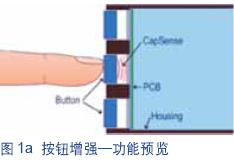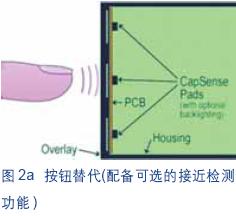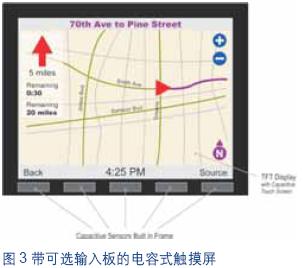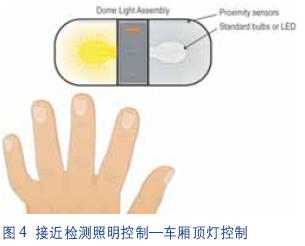Human Machine Interface (HMI) typically includes multiple systems that allow drivers to interact with the vehicle. In current car designs, the HMI can also display vehicle feedback information to the driver.
This article refers to the address: http://
As soon as we open the door, this kind of human-computer interaction begins, and it continues to run during the driving process until the driver gets out of the car and locks the door. This kind of human-computer interaction is to achieve the best balance of driver's sensory input, ensuring that the driving experience is both safe and fun.
HMI system modules that improve driver driving experience include keyless entry system, power seat adjustment, mirror control, on-board passenger detection, etc., and most importantly, most human-machine interaction areas - vehicle control Center stack.
At present, more and more companies are trying to introduce new technologies, and hope that cars also have the functions and features of consumer electronics. In addition, HMI is expanding, enabling drivers to control and use personal electronic devices such as cell phones, MP3 players and even in-vehicle infotainment systems.
As mechanical buttons are replaced by capacitive touch buttons, resistive touch screens are replaced by capacitive touch screens, standard light bulbs are replaced by high-brightness LEDs, and standard colors are replaced by color-mixing solutions, how drivers interact with these systems is also happening Great change.
The automotive industry is experiencing a revolution in human-machine interface technology that is constantly changing the way drivers and passengers interact with vehicles. Looking back at some of the new products launched in the past few years, and looking at the products currently under development, we can say with certainty that in the future, when buying a new car, you will definitely get more new features and functions.
One of the challenges facing the automotive market is the promotion of these new technologies and how long it takes for the car to adapt to these new technologies. At present, the semiconductor company has introduced a variety of products that are compatible with the vehicle and equipped with
The integrated development tools used enable in-vehicle system designers to design, test, optimize and launch solutions that were previously only seen in the consumer electronics arena.
For example, capacitive touch technology supports a high degree of flexibility and customizability, enabling vehicle designers to combine new features with existing mechanical designs to enhance functionality, replacing traditional buttons, with touchpad inputs and capacitive touchscreens. Etc., support proximity sensing technology or a combination of the above various functions.
Built on the Cypress mixed-signal array product line PSoC, CapSense provides a flexible and inexpensive way to integrate functional blocks such as capacitive sensing, proximity detection and capacitive touch screens on a single chip, significantly enhancing PSoC. Standard analog programmability. The degree of integration depends on the product used and the internal chip resources available.
Button function enhancement
Button function enhancement refers to the function of matching or further enriching traditional mechanical buttons through capacitive sensing technology. By integrating the corresponding functions in the in-vehicle infotainment system module and programming the buttons, the driver's preferences can be met.
Capacitive sensing technology delivers significant value by adding functional layers to provide simple functions such as button function preview or proximity detection that will be introduced in the proximity sensing section below.

The figure above shows a conventional panel implemented with mechanical buttons and capacitive sensing technology. Just touch the button (as shown in Figure 1 (a)), we can preview the function of the programmed button through the display; press the button to execute the pre-programmed command (as shown in Figure 1 (b)).
Buttons come in a variety of functions, including radio presets, saving playlists, speed dialing, and common destinations for navigation systems. Capacitive touch technology can also be used as a redundant safety feature to detect if a function-critical mechanical switch such as an electronic stability control (ESC) shutdown switch is stuck.
Button replacement
Button replacement refers to the use of capacitive touch buttons instead of all mechanical buttons on the module switch panel (see Figure 2). In this case, capacitive sensing technology eliminates the limitations of mechanical design in terms of curvature, over cladding material, etc. It is important to solve the manufacturing process problems of complex designs, thus greatly providing design flexibility.

Capacitive sensing technology integrates proximity sensing to further increase system integration. Proximity sensing turns on the backlight of the center console only when an object or person is detected to wake up the system into full operation. Another major advantage of capacitive sensing technology is that it not only eliminates the possibility of mechanical parts failing over time, increases system reliability, but also ensures that all functions are integrated on the sealed monolithic central control panel. The influence of common adverse factors in the car (such as various liquids and dust particles).
However, button replacement can bring new design challenges while solving some problems. Mechanical buttons provide feedback to the driver through tactile sensation, but capacitive touch design provides feedback through other human sensory inputs (such as visually observing the status of the LED button, hearing the buzzer feedback, etc.).

Although the resistive touch screen looks similar to a capacitive touch screen, it still has some mechanical properties. Resistive touch screens are based on pressure sensing rather than touch sensing technology, which can affect their durability and performance over time in automotive environments. Compared with resistive touch screens, capacitive touch screens perform well for long-term durability, are suitable for various temperatures in the car, are more wear-resistant and have higher transparency, and are therefore more popular in new in-vehicle infotainment systems.
The higher the transparency, the lower the required backlight intensity, which helps to reduce system power consumption and thus the overall system power consumption. Therefore, those systems with large electronic package size and module layout limitations and high power management complexity are Words are crucial. A navigation device design implementation in which a capacitive touch panel is embedded in a frame is given below.
For a central control panel design that uses a mechanical input controller (a controller like a joystick) instead of a touch screen, the touchpad provides handwriting recognition in addition to traditional menu controls (similar to a notebook's touchpad). More features, but also all the advantages of touch sensing technology versus mechanical design.
Proximity sensing
Proximity sensing goes further than button enhancement and button replacement. With proximity sensing, we can even use buttons at all, giving us full design flexibility, support for any module package size, and improved system reliability. Proximity sensing technology is mainly used in lighting control applications such as car ceiling lights (see below), door side storage boxes, and storage box lighting applications.

In-vehicle passenger detection is another example of proximity sensing applications that we can apply to door handles (keyless entry systems) and automotive central control panels (detecting whether the driver or passenger is reaching out to manipulate the control buttons and customizing the button functions accordingly) )in.
The small concept of capacitive sensing is not simple. With it, we can bring a revolution in HMI design, and no longer be bound by the limitations of previous mechanical components. Time will tell us how fast and how wide the technology will be promoted by first-tier manufacturers and OEMs. However, in terms of the development track of capacitive sensing technology in the consumer market, many car enthusiasts hope that this technology will be in each of them as soon as possible. It was promoted on the big car platform.
Piezoelectric Ceramic Ring
Applications: ultrasonic vibration tranducer for inkjet printer
Vibration mechanism of inkjet printer:
Generally, it is composed of piezoelectric ceramics and driving rods. By high-frequency electric excitation, piezo ceramics produce high-frequency ultrasonic vibration (above 60 kHz or higher), which is transmitted to the driving rod and generates high-frequency micro-displacement (back and forth expansion) at its front end.
Piezo ceramics components features :
1. High vibration amplitude and can withstand higher power.
2. The product has high reliability, strong maintainability, and is not easy to break down or off-line.
3. The frequency can be adjusted in a wide range, generally within the range of 10KHz.
Yuhai support all the new developping transducer, Welcome the customized elements inquiry.
The present Piezoelectric Elements For Inkjet Piezo Transducer is following :
Piezo rings OD4*ID2*2.5mm price USD1.20/pc, 2000pcs
Material: PBaS-4
Fr.: 694 KHz ±5KHz
K33: ≥0.55
Tg loss <0.5%
Ct 60pF ±12.5%
Piezo rings OD4*ID2*2.5mm price USD1.20/pc, 2000pcs
Material: PSnN-5
Fr.: 626KHz ±5KHz
K33: ≥0.57
Tg loss < 2%
Ct 53pF ±12.5%
Piezo rings OD6*ID2.5*2mm price USD1.50/pc, 2000pcs
Material: PZT-41
Fr.: 785 KHz ±5KHz
K33: >0.53
Tg loss < 0.5%
Ct 107 pF ±12.5%
Piezo Rod OD3*7mm price USD1.20/pc, 2000pcs
Material: PLiS-51
Fr.: 192 KHz ± 3KHz
K33: >0.62
Tg loss < 2%
Ct 18.7 pF ±12.5%
Piezoelectric Elements For Inkjet Piezo Transducer
Inkjet Piezo Transducer,Piezoelectric Vibration Tranducer,Piezoelectric Rings,Piezoelectric Elements For Inkjet Piezo Transducer
Zibo Yuhai Electronic Ceramic Co., Ltd. , https://www.yhpiezo.com